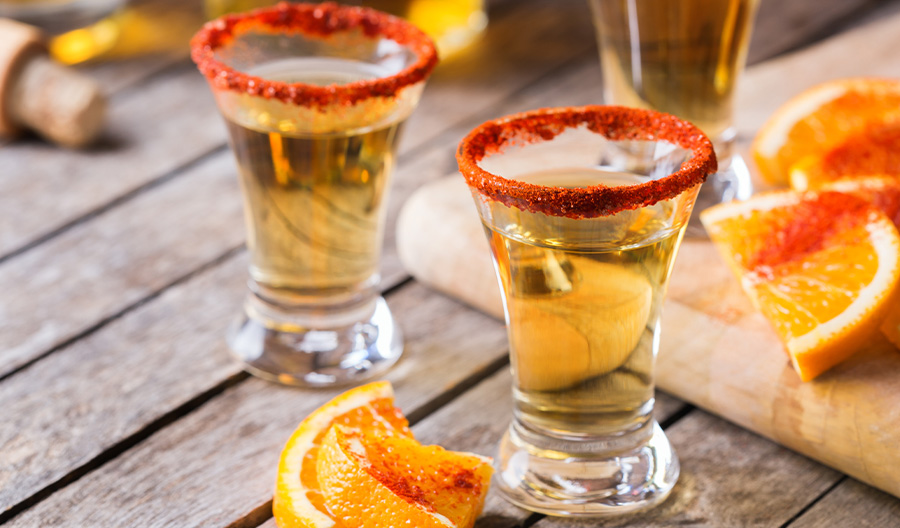Few spirits draw as many parallels with wine as mezcal. Microclimates, varying soil types, plant ripeness, fermentation and distillation techniques, along with the producers’ influence, play immense roles in mezcal production. That’s in addition to the many types of agave used to make mezcal, much like the various grape varieties used in wine. Agave variety, often listed on the bottle, is still usually the best place for consumers to distinguish among mezcals. Here are eight that you’re most likely to find.
Espadín
Scientific name: Agave angustifolia
Other common names: Espadilla, Tepemete, Pelón Verde
The ancestor of the Tequila agave, espadín is by far the most commercialized species after Agave tequilana, responsible for at least 80% of all mezcal sold. It resembles Agave tequilana Weber closely enough that espadín was discreetly brought from Oaxaca during Tequila’s severe agave shortage of the early 2000s.
Espadín’s ubiquity is due largely to its high sugar concentration, which can yield larger volumes of spirit than other agave species (it takes about 20 pounds of espadín to make a liter of mezcal, while some agaves can require more than triple that amount). Its piña, the heart of the plant named for its resemblance to a pineapple, usually weighs 120–150 pounds. Espadín mezcals are full and sweet, with honeyed sweet-potato notes of roasted agave.
Mezcal aficionados sometimes dismiss espadín for its preponderance and perceived lack of complexity, but in the right hands it can make a delicious spirit. Espadin makes great mezcals, depending on the mezcalero, the quality of the piñas, and what processes they use to bring out the best in it.
Mexicano
Scientific name: Agave rhodacantha
Other common names: Espadillón, Ixtero Amarillo, Cuixe
Mexicano agave is revered for its large size, relative scarcity, vivid green hue and kaleidoscopic spray of rigid, tightly-spaced leaves. In some Oaxacan towns it’s called Cuixe, a name otherwise reserved for Agave karwinskii. Mexicano makes full-bodied mezcals, fruity and smoky.
Mexicano is very special, as they make very smooth mezcals with a touch of anise.
Arroqueño
Scientific name: Agave americana
Other common names: Sierra Negra, Serrano, Sierrudo, Coyote
There are many subspecies of Agave americana that vary in appearance but share certain qualities. Arroqueño usually refers to the oaxacensis variety, but terminology can differ depending on the region. These huge agaves can be 8 feet tall and 11 feet around, with piñas weighing from 200 to more than 450 pounds. For producers, this can mean as many as 30 bottles of mezcal per plant. The strong cooked-agave flavor shows through with layered herbs and spices.
“These are huge magueys but they have very complex flavors,” says a maestro mezcalero in the Oaxacan village of Santa Catarina Minas. “They can be intense, but compared to espadín, their sweetness is much less obvious.”
Karwinskii
Scientific name: Agave karwinskii
Other common names: Madrecuixe, Bicuixe, Cuixe, Tobaziche, Barril, Cirial
Karwinskiis are easily identified by their piñas, which resemble long narrow logs of hardwood rather than plump pineapples. There are several subspecies used for mezcal, whose common names vary but all fall under the distinctive karwinskii umbrella. These mezcals have flavors of herbs and roasted vegetables, often with a prominent note of peanut.
“All karwinskiis have a ‘green’ herbal nose, but because there are so many varieties, the mezcals can vary a lot,” says the co-owner of a mezcalería in Oaxaca. “Barril, for example [an especially large and long-lived karwinskii] is very complex, dry and elegant with notes of citrus peel.”

Tepeztate
Scientific name: Agave marmorata
Other common names: Pichomel, Pichometl
Tepeztate has an almost mythical reputation, being the agave that takes the longest to reach maturity—up to 35 years in the wild. It also has very low yield. More than three-times the amount of tepeztate is needed to make the equivalent amount of mezcal as espadín. It usually has a rich, earthy aroma, but with notes of ripe tropical fruit as well.
Tepeztate is the most aromatic of all mezcals. If you think of how long it stays in the ground, it absorbs so much character from the soil and even the other plants around it.
Tobalá
Scientific name: Agave potatorum
Other common names: Papalomé, Papalométl
A squat, diminutive plant, tobalá is the darling of the mezcal world, partly for its small-but-mighty appearance, but also for its reputation as an “always wild” variety. It doesn’t make hijuelos (the clonal offshoots responsible for most agave propagation), but rather must be propagated by seed.
Today, most tobalás are planted intentionally and wouldn’t be considered “wild” by most measures. The mezcals, though, are the most delicate of all varieties, light in body but big on aroma and flavor. Tobalá is more floral, sometimes a little waxy, and can be lightly fruity or caramelized.
Cupreata
Scientific name: Agave cupreata
Other common names: Papalote, Gordito, Ancho
Abundant in Guerrero state (which borders Oaxaca), cupreata resembles tobalá in appearance, if not taste. Where tobalá is light and floral, cupreata usually boasts aromas and flavors of ripe tropical fruit, and earthy notes of black pepper or roasted poblano chile.
Cenizo
Scientific name: Agave durangensis
This agave is found almost exclusively in southern Durango state, as well as parts of neighboring Zacatecas. Its singular mezcals are becoming increasingly popular as an alternative to Oaxacan mezcals made over 800 miles to the south. It’s called cenizo, or “ashen,” because the green leaves have ash-grey tips, as if they’ve burned. The mezcals are fruity, with an almost creamy texture.
Cenizo can take on aromas from the huizache [sweet acacia] and mesquite trees that are so abundant where it’s grown,” says a Durango-based maestro mezcalero. “It has a sweet flavor with hints of burnt caramel.”
Cenizo grows in areas with high diurnal shifts and seasonal variation. Temperatures in the regions where it’s grown can range annually from 25°F to 105°F, and swing 40 degrees in a day. It flourishes under this temperature variation and develops very complex sugars. When fermenting, the fermentation vats are buried in the earth to insulate them from temperature extremes.

